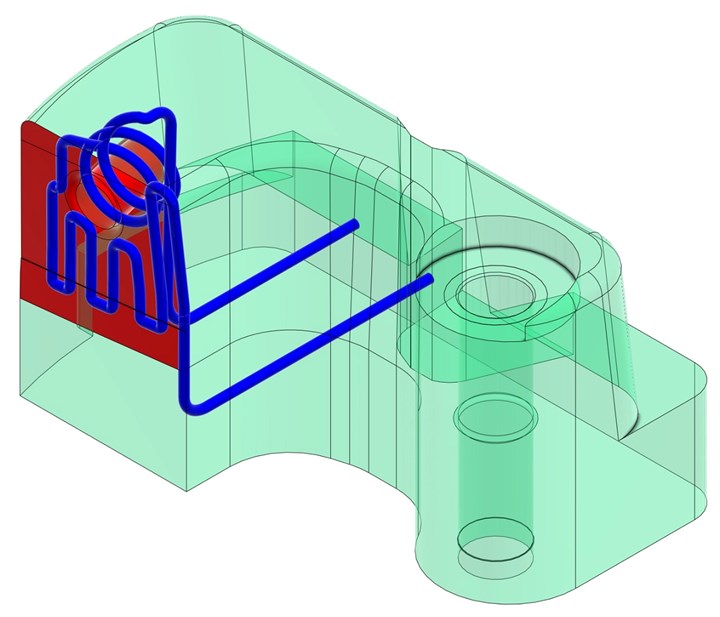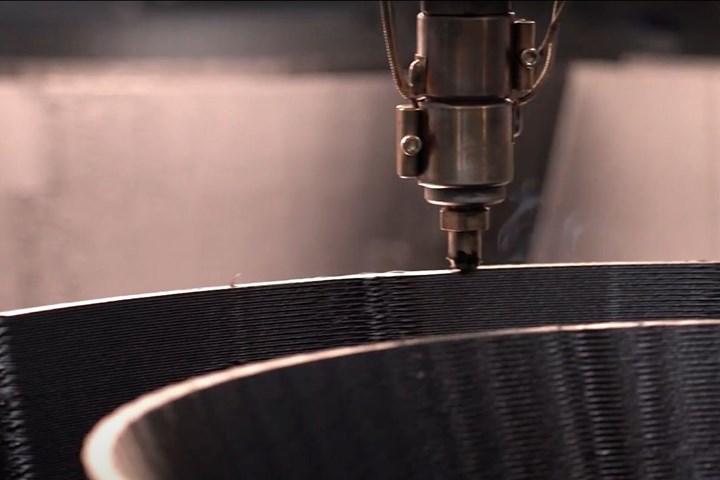
Mold builders should invest in cooling and finite element analysis (FEA) simulation, conformal cooling design and additive manufacturing (AM) to open up the doors to new business opportunities. Photo Credit: Tom Claes on Unsplash
Additive manufacturing (AM) is becoming a growing priority for many mold companies. This is happening because of decreasing cycle times made available by new tool design capabilities made possible by AM, like conformal cooling. As recently as three years ago, moldmakers might have felt that customers were unwilling to pay the extra cost associated with conformal cooling and AM. However, this response is beginning to disappear from conversations. Instead, it is being replaced with comments like, “I can’t believe we’re losing jobs to a competitor who charges three times what we do!”
In most cases, shops losing out to higher priced bids are losing out to better cycle times — in many cases, more than two times better. So over the lifetime of a mold, it makes sense for customers to budget more upfront costs to make significantly more money over that mold’s production lifecycle, especially for high-volume products.
Featured Content
This is not to say that conformal cooling, topology optimization and AM are always a no-brainer. It still depends on the specific job and a company’s strategy for manufacturing its mold. For example, it’s still unreasonable in most cases for a company to manufacture a massive automotive mold entirely with 3D printing. However, roughing out a large mold cavity and creating inserts for parts requiring faster cycle times makes a lot of sense in many cases. As moldmakers face more demand for high-volume products, cycle times become an ever-growing priority.
So, what can a mold builder do to give itself the best chance for success in this changing landscape? The answer can be found in three key areas where a moldmaker should build capacity to prepare for a world of shrinking cycle times and customers willing to pay more for more productive tools. A shop looking to move further into 3D printing should immediately invest in the first two areas and consider its preferred strategy for tackling the third.
1. Simulation
Cooling simulation and finite element analysis (FEA) are two aspects of simulation that are especially relevant to moldmakers in this conversation.
Cooling simulation — While many mold professionals might prefer to use professional experience and personal judgment on mold cooling and cycle times with traditional molds, the same can’t be said of molds manufactured additively with optimized topology and conformal cooling since very few professionals have deep experience in these areas. For this reason, companies are investing in cooling simulation technologies to perform cooling simulations.
One primary reason for this is to determine which projects will benefit the most from conformal cooling, which enables a company to decide on a case-by-case basis when it wants to use conformal cooling, and, therefore, AM (since most conformal cooling channels can’t be manufactured by traditional machining). This simulation will also provide companies with an accurate way to quote lower mold cycle times and win more work.

Mold builders face a growing demand for structural simulation and analysis from customers. As a result, many are choosing to bring this simulation in-house. Photo Credit: Siemens Digital Industries Software
FEA — While it’s been around for many years, FEA analysis is seeing a growing interest from the mold industry due to new efforts to optimize the topology of tools. For example, companies are looking to reduce the weight of their tools by removing material, but doing so requires a precise simulation to determine the tool’s structural integrity to ensure it isn’t being compromised in the process.
Growing demand for deflection simulation and analysis is also prompting companies to rethink their mold designs and become more innovative, which requires simulation to ensure the tools will remain high quality and durable.
2. Conformal Cooling Design
To decide whether a project will benefit from conformal cooling, a company needs the ability to design conformal cooling channels. In this case, it needs an easy-to-use but powerful solution for generating these cooling channels. Second, the solution needs the ability to analyze these cooling designs for manufacturability quickly.

New smart features in advanced CAD/CAM/CAE software allow for the easy creation of conformal cooling channels, which can significantly reduce a tool’s cycle time. Photo credit: Siemens Digital Industries Software
More recent releases of advanced high-end CAD/CAM/CAE software are powerful in these areas, with dynamic abilities to understand users’ design intentions and to heavily automate the creation of conformal cooling channels around a product inside a mold. Additive modules can also analyze designs for manufacturability and ensure a seamless handoff to the fabrication machine.
3. Additive Manufacturing
Once a company can easily design conformal cooling designs, optimize topology and simulate the results to determine the design’s viability, it can decide whether to pursue AM for that project. The company can take two paths at this point: outsource the AM or bring it in-house.
This is a decision that each company will need to make based on return on investment (ROI). Still, the industry trend is for mold builders to bring this technology in-house and shrink their payback period by performing a combination of in-house and contract manufacturing services using 3D printing.
RELATED CONTENT
-
VIDEO: Qualifying Modified H-13 for 3D-Printed Tooling
Next Chapter Manufacturing and International Mold Steel discuss their partnership to qualify a modified H-13 for tooling applications.
-
Evaluating Metal Powders for Conformally Cooled Mold Inserts
Mechanical properties and design software techniques reveal the benefits of a modified high thermal conductivity metal powder for 3D printing in moldmaking.
-
3 Technologies to Help Fill the Skills Gap
Moldmakers can address the labor challenge with robotic systems, simulation products and metal 3D printers.
















